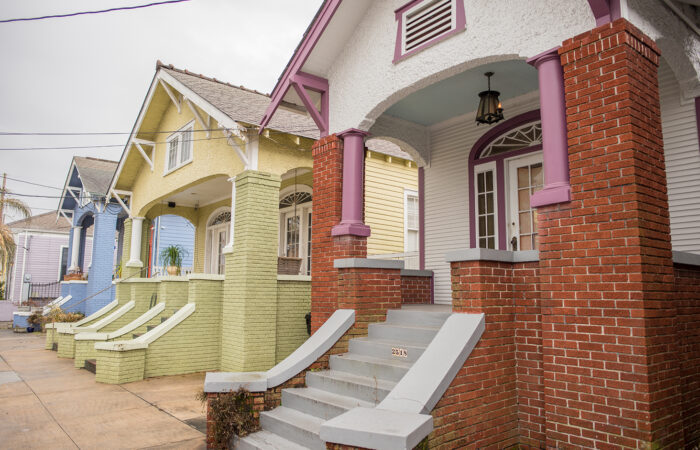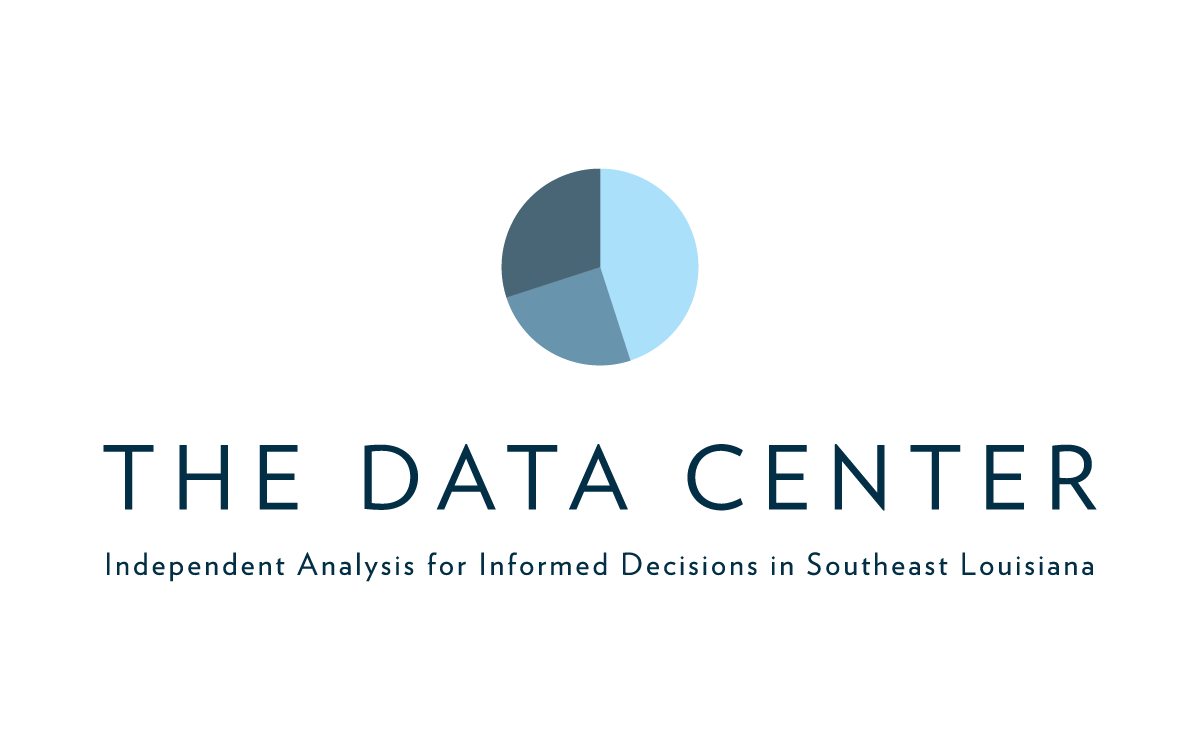
Reframing “Wealth” and Activating Data as an Effective Tool for Change
Published: Jun 13, 2024
Over the course of several years The Data Center has engaged in extensive conversations across the country about the “Wealth Gap” because we understand the importance of wealth for community resilience. But we’ve found that when you start talking about wealth gaps, people often get, “turned off.” The reasons seem to vary depending on the person. Things are further complicated when the conversation turns to solving the racial wealth gap.
Because the word “wealth” often evokes images of influence and affluence and the benefits that come along with them, when researchers and advocates talk about balancing wealth gaps across demographics, it’s a short leap to imagining that efforts to redistribute wealth aren’t far behind. To be clear, discomfort with talking about the wealth gap and its potential solutions doesn’t seem isolated to particular groups. Some on the upper end of the wealth spectrum may be reticent to support actions that, according to their perceptions, seem to vilify wealth accumulation, threaten their current and/or future wealth, or simply don’t square with their worldviews about how wealth is built. Likewise, those on the lower end of the spectrum, who may not have had access to wealth in any form and are more concerned with day-to-day survival, also don’t connect to the concept as it doesn’t appear to reflect or have a good chance of directly helping their present circumstances. In the end, it is often a divisive topic, pushing both sides farther away from realizing collective prosperity. But adequate wealth is still an important element of quality of life, so what would a path forward look like?
Wealth can be polarizing not because we disagree on the need to address issues such as racial wealth disparities, but because of differing understandings of wealth accumulation and the strategies that promote growth within populations. Those who favor free market capitalism might propose deregulation, incentives, minimizing government intervention, or lowering taxes to spur job creation coupled with personal initiative as solutions to the wealth gap. Supporters of community based social reform philosophies might prefer direct corrective action such as reparations, redirection of public funds to expand public benefits, and/or progressive taxation to raise funds that would significantly enhance social safety net programs. Regardless of preference, these strategies are not available at the local level at a sufficient scale and breadth to solve long developing disparities in wealth. This level of action generally requires effective policy from state and federal governments along with significant private sector cooperation. Even if we agreed on a few basic local priorities that could affect wealth – successful education and training systems, broad job growth and upwardly mobile career opportunities, affordable housing and homeownership, access to banking and financial institutions, a healthy and inclusive small business ecosystem, and so on – the link between them and wealth often remains hidden or, at best, implied, partly because we simply lack the data to explore it.
Nevertheless, there are opportunities to address wealth gaps at the local level. Doing so requires consistent baseline data suitable for identifying the drivers and levers that can meaningfully affect the wealth gap with local action and resources. But even before that, useful definitions of wealth and the wealth gap that allow for both actionable quantification and avoid the discomfort the word wealth brings must be established.
Mechanically, wealth is the sum of all assets minus the sum of all debts. The related term, “wealth gap,” fundamentally describes differentiated access to the basic resources required to live and advance in today’s economic context. But an expanded definition of wealth, based on what it enables and not merely its monetary properties, has the potential to better guide efforts to truly reduce the wealth gap. To realize this potential, we should reframe wealth as a measure of one’s ability to thrive – to weather emergencies and health shocks, to give families the means to succeed through stable housing and educational opportunities, to pursue investment and business opportunities as they arise, then to pass down resources and assets to future generations so they, too, begin life with enough financial stability to thrive.[1] In short, having wealth means having viable choices and the agency to make reasonable decisions on behalf of one’s family.
When this definition is applied collectively, having greater wealth means that neighborhoods aren’t on the edge of financial disaster, nor will one “bad break” spiral residents toward poverty. For example, an anchor business leaving a neighborhood retail corridor is simply replaced as opposed to foreshadowing the eventual hollowing out of the neighborhood.
Through this lens, wealth is a powerful way to contextualize the problems communities face and clears the path for data to better contribute to problem solving. Indeed, many of the factors described above are readily quantifiable using existing data. Unfortunately, measuring how each of those elements contributes to overall individual or community success is hard. Wealth, however, sidesteps this issue by condensing the social and economic successes and injustices of the past, uneven opportunities in the present, and hopes for a future of shared prosperity into a single calculation. From this perspective, wealth is a useful and easily understood concept with the ability to sum up our collective efforts into a measurable construct.
This clear-eyed and practical approach to the wealth gap facilitates recognition of the historical and current day decisions, policies, practices, and laws that influence wealth accumulation, making the origins and solutions to wealth gaps easier to discover and act upon. While many components of wealth are the result of past decisions rooted in racist public policies and discriminatory private practices; and in as much as that reality worked to ensure disadvantage for Black and indigenous people and stripped wealth from their communities, they eventually harmed White individuals and communities as well. Undoing these past inequities can create stronger communities that offer a higher quality of life for all of us, regardless of race or ethnicity.
Identifying antecedents to the wealth gap provides a pathway for data to serve as an important tool supporting wealth generation for those who have lacked it. Good local data can bring the kind of visibility that makes solving the wealth gap within communities a choice. As we wait for national change capable of addressing wealth issues at scale, locally we can chart our own path forward. In addition to the quality of life gains described earlier, the W. K. Kellogg Foundation’s Business Case for Racial Equity in New Orleans makes clear the collective financial benefit that awaits us for choosing to solve inequity. The report describes a $43 billion increase in local economic output associated with eliminating inequity across a range of key areas. Eliminating all inequity is a daunting task, but The Data Center’s report on the potential economic impact of increasing income for Black New Orleanians points to gains that are available to all of us through even the incremental step of reducing disparities in income. Imagine the benefit if wealth disparities were addressed not only across racial lines, but for all populations in the metro area.
To begin identifying solutions, a shared understanding of the current situation is essential. Despite abundant evidence of a racial wealth gap in the U.S., a recent Pew survey reveals that many Americans believe there is little difference between races when it comes to wealth, financial resources, and access to opportunities, with 43 percent saying the average Black person is about as well off or better off financially than the average White person. Paradoxically, others believe poverty and its related problems are largely the plight of people of color, which misses the millions of White Americans that struggle with the same concerns. The danger in either position is in believing that either no targeted corrective action can be justified or that these efforts would unfairly leave out many struggling people.
Misperceptions about wealth and other disparities are often perpetuated by misinformation, disinformation, reasoning by anecdote, and/or bias toward personal experiences. Local data deconstructing wealth can be a critical tool for developing a shared understanding of the dynamics of wealth accumulation (and extraction) and informing the scale, variety, design, and implementation of effective solutions.
Clearly, the opportunities discussed depend on the availability of good data to guide our decisionmaking. Unfortunately, across the country data on the wealth gap at the local level is virtually nonexistent. The Data Center has responded to this challenge through the novel development of model-based statistical estimates of local wealth that take into account gender, race, age, income, educational attainment, home ownership and value, employment classification, family structure, and, to a lesser extent, disability, citizenship, English proficiency, public assistance, social security, and poverty status. In The Data Center’s first publication quantifying the local wealth gap, the data suggests that: there are significant differences by race that accumulate over the course of a person’s life, socioeconomics alone don’t explain our disparities, and, for about the lower third of the wealth distribution, White, Black, and Hispanic people all have similarly low levels of wealth. It also confirms the common notion that homeownership is an important driver of local wealth. While this newly developed data is only available for the New Orleans metro area, The Data Center’s methods can be applied to nearly any metro area in the country, allowing many regions to address their issues effectively through a measurable, data-based, and quality of life-oriented approach to wealth inequities.
Conversations on the wealth gap do often center on disparities by race, and for good reason, but our local data suggests there is a significant element that goes beyond race. With the data we’ve produced, solutions can be better tailored to address specific circumstances that cause hardship for many in our region. As such, solving the wealth gap can be a unifying activity, bringing the shared prosperity necessary for all groups to perform at their utmost potential and fully participate in the economy. To be sure, the causes, solutions, and subsequent choices for solving social issues may differ across demographics, but the necessity of addressing them all remains the same. We need not be divided over ideas on improving lives in our region, but rather work together using tactics suggested by rigorous analysis of good data to the benefit of all.
Endnotes
1This expanded definition of wealth has been well documented by William Darity Jr. and Kirsten Mullen in their book, “From Here to Equality,” as well as a range of others.

